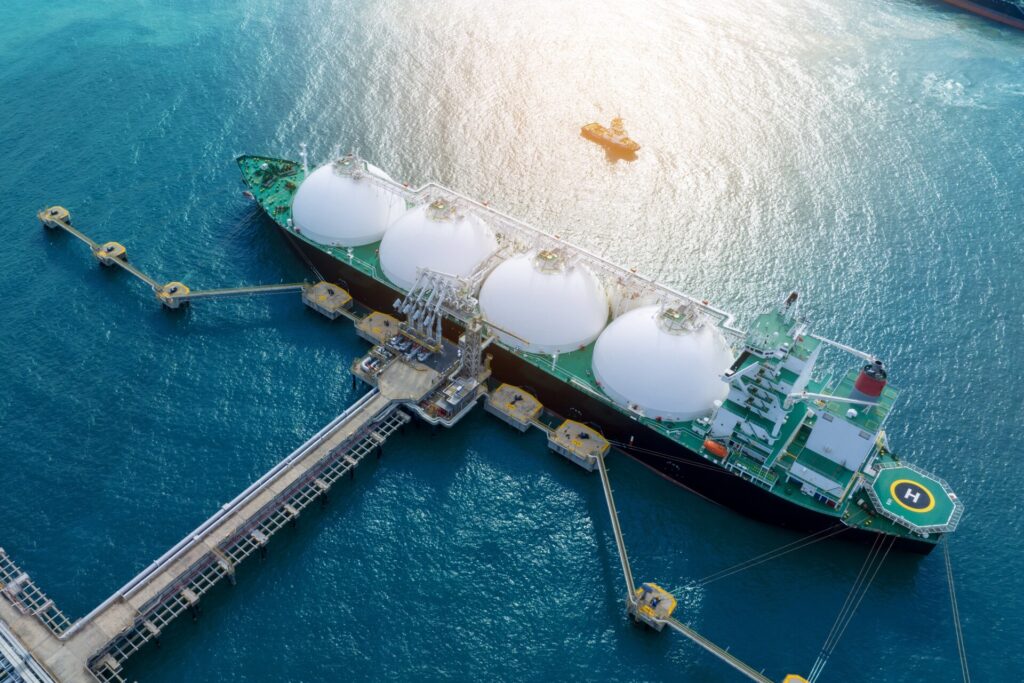
More South American countries are continuing to enter and expand their presence in the global liquid natural gas market. Liquid natural gas (LNG) provides a path towards energy security, economic growth, and lower carbon emissions. Countries like Argentina, Bolivia, Brazil, and Peru have abundant natural gas reserves. This positions the region as a key player in the liquid natural gas market. LNG is a cleaner alternative to coal and oil, which produces lower carbon emissions and no sulfur dioxide. It serves as a traditional fuel that helps reduce greenhouse gas emissions. Development of LNG infrastructure can attract foreign investments, create jobs, and generate revenue from export sales. The infrastructure includes liquefaction plants, storage facilities and export terminals. Preformed guy wires help in stabilizing and supporting the safety of LNG infrastructure.
Formed guy wires support structures used in the production, storage, and transportation of LNG. Preformed guy wires are specially designed wires used to anchor and support tall structures. The formed wires ensure the facilities can withstand environmental forces and continue operating efficiently. The guy wires are designed to withstand high wind loads and seismic activity to mitigate their impacts on LNG infrastructure. Preformed guy wires work in LNG storage tanks, pipelines, and loading and unloading facilities. They prevent accidents, which contribute to the successful operation of LNG facilities. In this article, we will highlight the contribution of preformed guy wires in LNG. It will also look at the risks and issues relating to liquid natural gas in South America.
Contribution of preformed guy wires in LNG infrastructure
Preformed guy wires serve in the stability and safety of liquid natural gas infrastructure in South America. They are essential components in the construction and maintenance of LNG facilities such as storage tanks, pipelines, and loading terminals. Preformed guy wires have the ability to ensure the safety of new and existing LNG facilities in the region. They can also help South America address the technical and environmental challenges related to LNG production. The following are the contributions of preformed guy wires in LNG infrastructure.

- Structural stability for storage tanks – LNG storage tanks are large and need strong support systems to withstand environmental forces. Preformed guy wires help stabilize the tanks and ensure the structural integrity.
- Support for pipelines – LNG facilities involve extensive networks of pipelines for transporting natural gas to liquefaction plants and export terminals. Preformed guy wires provide extra support and tensioning for pipeline structures. This helps to maintain alignment and prevent sagging or displacement.
- Enhancing safety in loading terminals – LNG terminals have tall structures like loading arms, cranes, and other equipment. Formed guy wires help to anchor the structures to ensure they remain stable during the transfer process.
- Resilience to seismic activity – the infrastructure should withstand seismic activities such as earthquakes. Preformed guy wires should provide flexibility and damping features that help structures absorb seismic shocks.
- Corrosion resistance – LNG facilities are closer to coastlines to ease export. Preformed guy wires are made from corrosion-resistant materials that make them suitable for the harsh conditions. They provide durability, which helps extend the lifespan of the support systems.
Risks and issues hindering the progress of liquid natural gas in South America
The adoption and development of liquid natural gas in South America presents several issues and risks. The industry professionals need to address these issues to reach their full potential and have a stand in the LNG market. Addressing these challenges could enhance the role of LNG in the energy sector and capitalize on the potential for economic growth. This could involve attracting investments, investing in infrastructure, and diversifying energy portfolios. The following are the several challenges facing LNG development in South America.

- Infrastructure development – developing LNG infrastructure, including storage facilities, requires significant investments. The geographical diversity in the region also poses extra infrastructure challenges.
- Regulatory and policy risks—frequent policy changes, inconsistent enforcement, and bureaucratic red tape—can hinder investments in LNG projects. Political instability could result in national threats, changes in taxation, or modifications to energy subsidies.
- Economic and market risks – LNG prices are facing fluctuations in global energy markets. This is from factors such as demand changes, geographical events, and competition from other energy sources like renewables.
- Technological and operational risks – LNG operations involve advanced technology an engineering. Factors such as extreme weather events, earthquakes, or social unrest can disrupt LNG operations.
